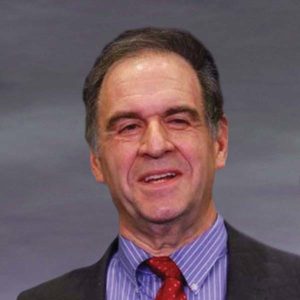

Public advocates, investigative journalists and government officials all routinely call out leaders for deceit or incompetence. Sometimes they get it wrong, yet their false narratives are quickly embraced and propagated by the masses.
Thus, virtually every CEO must now be ready to correct misconceptions that, once aired, take on lives of their own, thanks to the presumed “wisdom of crowds,” wrongly celebrated by herds of cynical journalists, market worshipping economists, social network sociologists and cognitive psychologists.
Journalist James Surowiecki’s 2004 bestseller, The Wisdom of Crowds, lauded the collective instincts of groups. But public opinion often suffers from the same decision-making flaw that frequently leads to misdiagnoses in the medical field: “premature closure,” or a failure to consider reasonable alternatives once an initial conclusion is posited. Summed up by the adage, “When the diagnosis is made, the thinking stops,” such decision-making bias can have devastating consequences.
Fifty years ago, Yale’s Irving Janis termed a similar mass pathology “groupthink,” in which a lack of dissent and healthy debate results in poor decision-making. As Charles MacKay’s pioneering three-volume 1841 book, Extraordinary Popular Delusions and the Madness of Crowds chronicled, some of history’s biggest disasters can be attributed to crowd-following, from a rash of witch-burning in Salem to the Dutch tulip bulb bubble.
We’ve seen examples in government recently, with career civil rights activists like Vice President Joe Biden and House Speaker Nancy Pelosi being ambushed by deviously misguided accusations of racial bias from self-styled “progressives” in their own party. White House Senior Advisor Jared Kushner had to fend off critics of his Mideast economic plan, which challenges their investment in the status quo of entrenched conflict.
Connecticut Governor Ned Lamont regularly contends with the recycling of three-year-old anecdotes about the exodus of prominent hedge fund titans due to the spiraling tax hike tactics of his predecessors.
In the business world, Jamie Dimon of JPMorgan had to correct widespread misconceptions that $9 billion of honest but reckless “London Whale” trading losses were the result of fraud. Boeing CEO Dennis Muilenburg faced down media whisper campaigns that intentional wrongdoing was behind the tragic downing of two 737 Max jets, and Johnson & Johnson CEO Alex Gorsky battled to combat false accusations by the plaintiff bar regarding the safety of his company’s talcum powder with piles of objective scientific reports.
Going further back, Lee Iacocca of Ford and Chrysler was caught off-guard by charges deeming the Pinto more dangerous than other subcompacts of that era. The heroic late Patricia Dunn, as board chair of Hewlett-Packard, had to fight false accusations that she conducted surveillance of fellow directors to stop the flow of confidential leaks—an assertion that was covertly planted across the media by fellow HP director Tom Perkins in an effort to settle a board politics score.
Having studied dozens of such cases above and worked with scores of honest CEOs struggling to be heard over the wind, I’ve learned that to conquer specious conventional wisdom, CEOs must:
1) Engage the media promptly and in person so that the other side of the story is heard.
2) Counter the critics immediately, respecting their legitimate questions.
3) Counter with facts rather than by attacking character.
4) Provide background for highly credible objective surrogates.
5) Enlist government officials as arbiters of truth.
As field-based scientific maverick Louis Pasteur said, “Chance favors the prepared mind.”
Read more: Do Your PR Mavens Really Have Your Back?




0

1:00 - 5:00 pm
Over 70% of Executives Surveyed Agree: Many Strategic Planning Efforts Lack Systematic Approach Tips for Enhancing Your Strategic Planning Process
Executives expressed frustration with their current strategic planning process. Issues include:
Steve Rutan and Denise Harrison have put together an afternoon workshop that will provide the tools you need to address these concerns. They have worked with hundreds of executives to develop a systematic approach that will enable your team to make better decisions during strategic planning. Steve and Denise will walk you through exercises for prioritizing your lists and steps that will reset and reinvigorate your process. This will be a hands-on workshop that will enable you to think about your business as you use the tools that are being presented. If you are ready for a Strategic Planning tune-up, select this workshop in your registration form. The additional fee of $695 will be added to your total.

2:00 - 5:00 pm
Female leaders face the same issues all leaders do, but they often face additional challenges too. In this peer session, we will facilitate a discussion of best practices and how to overcome common barriers to help women leaders be more effective within and outside their organizations.
Limited space available.

10:30 - 5:00 pm
General’s Retreat at Hermitage Golf Course
Sponsored by UBS
General’s Retreat, built in 1986 with architect Gary Roger Baird, has been voted the “Best Golf Course in Nashville” and is a “must play” when visiting the Nashville, Tennessee area. With the beautiful setting along the Cumberland River, golfers of all capabilities will thoroughly enjoy the golf, scenery and hospitality.
The golf outing fee includes transportation to and from the hotel, greens/cart fees, use of practice facilities, and boxed lunch. The bus will leave the hotel at 10:30 am for a noon shotgun start and return to the hotel after the cocktail reception following the completion of the round.